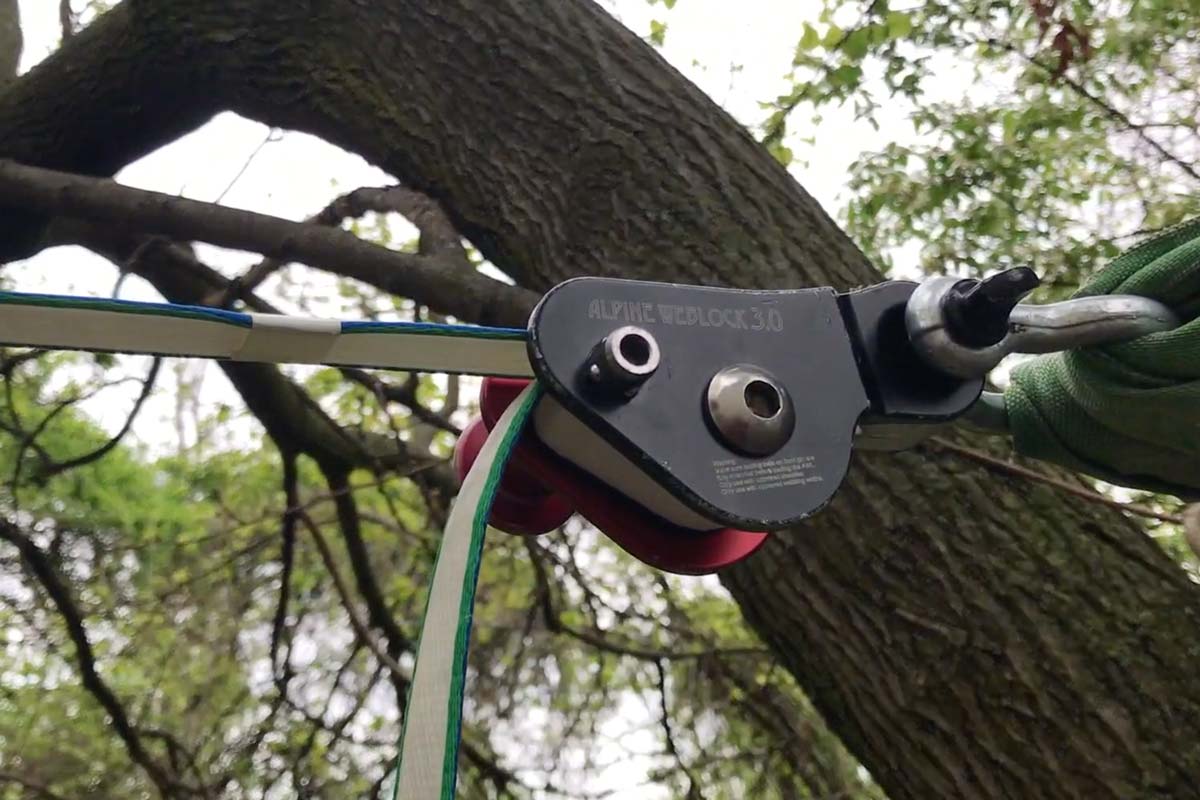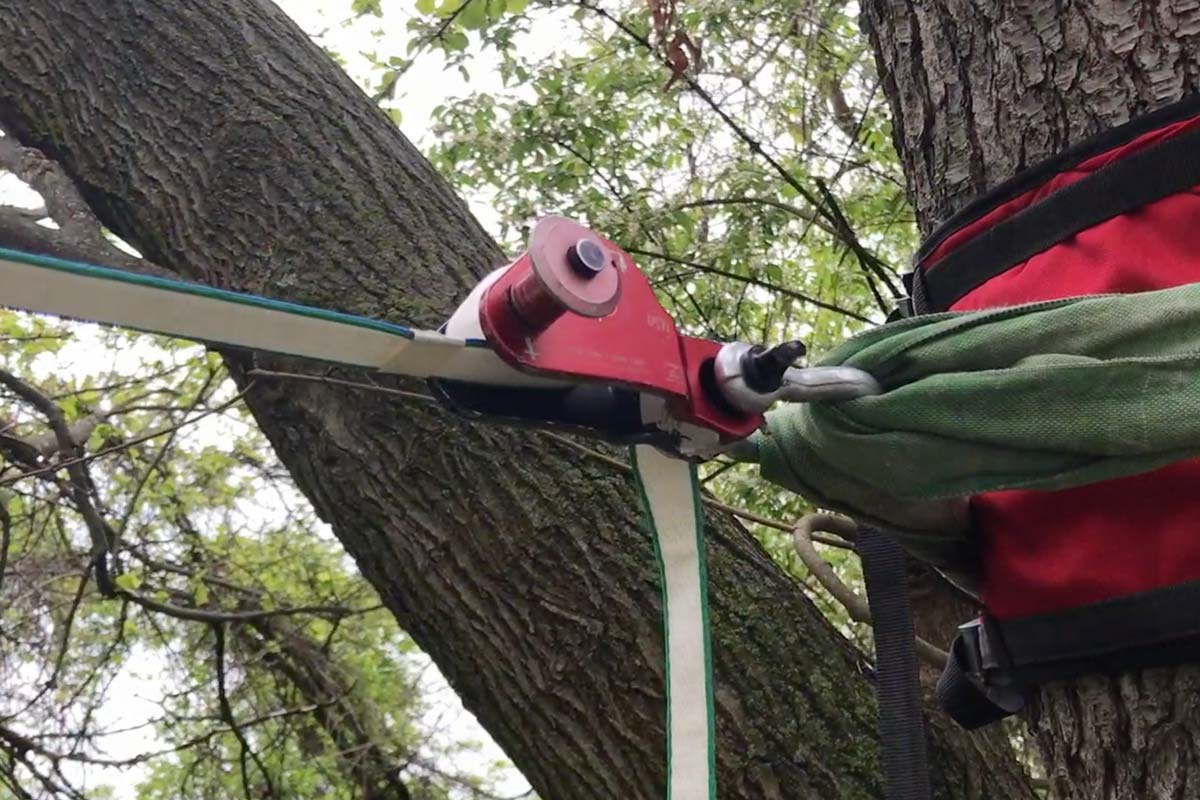You have no items in your shopping cart.
0
You have no items in your shopping cart.
A very simple test we did comparing webbing slippage in low tension highlines between upside-down and right-side-up weblocks.
Recently there has been a discussion about whether rigging a slackline or highline with an upside-down weblock causes an increase in slippage or presents a danger to the rig. Here is a link to the discussions: https://www.facebook.com/groups/slackchat/permalink/1467019050038634/
In the past, we have always advocated for upside-down weblock rigging on specific highlines due to better webbing handling in the rig. This includes easier tensioning when using a simple Buckingham tensioning system as well as better interaction with the backup line when rigging double-webbing highlines.
We know from a test done by Philipp Gesing and Thomas Buckingham (https://slacktuev.org/2015/11/05/webbing-slippage-in-low-tension-highlines/) that webbing does indeed slip through weblocks on low tension highlines, regardless of webbing type or wrap method. The question remains, however, does rigging with upside-down weblocks increase the likelihood of webbing slippage in the weblock? We sought to repeat the test done by Philip and Thomas comparing a right-side up weblock to an upside-down weblock.
To test this, we chose a short gap, about 35 feet (10.7m) long, and rigged a simple slackline. On one end, we had a sewn loop connected to a shackle going to a dyno, which was connected to a spanset going around the tree. On the other side, we had our weblock connected to a shackle which was connected to a spanset going around another tree. There was a leash on the line that we tied to a 7 pound (3.2kg) weight with a constrictor hitch.
We would start with the weblock in the right-side-up position.

We pretensioned the line to 50 lbs (22.7kg) and then marked the line at the exit of the weblock with a piece of tape. We then measured the distance from the tape to the weblock as the starting position. Then we set up a ladder in the middle of the line. We would stand on the ladder and drop the weight from the full length of the leash above the line 20 times, measuring the distance between the tape and the weblock after 10 drops and 20 drops.
We then would repeat this process for an upside-down weblock.

The line we used was Feather PRO (version 1). The weblock we used was an Alpine WebLock 3.0.
Please note, the tail coming from the weblock was not tied off in these tests. This is not an appropriate way to leave a rig for any type of slackline. If you are going to step foot on a line, your webbing tail NEEDS to be tied off in a bomber fashion to the master-point of your line. A great way to do this is with the MMO Method, described in this article - http://www.balancecommunity.com/slack-science/how-to-mitigate-webbing-slippage-the-mmo-method/.
Right-Side-Up Weblock Test
Upside-Down Weblock Test
First off, let me say that this test is far from conclusive. We only tested a single weblock with a single webbing a single time. Even though it appears the upside-down weblock slipped less, to be sure of any of these results, more testing needs to be done.
We can say with confidence that no matter how your weblock is oriented, webbing will slip at low tensions. This reinforces the fact that the tails of your webbing absolutely need to be tied off! As mentioned above, the MMO method is a great way to do this. I will be sharing a few other ways in the near future as well.
Coming out of this test, I feel no less confident in rigging with upside-down weblocks and would recommend it as a viable anchoring strategy for many highline rigs. Just tie off your tails!
Please note, the upside-down weblock orientation does have the tail coming off in an unfavorable way on the top of the device. If the tail is left loosely hanging off the weblock, it may work it's way underneath the mainline, causing the weblock to fail completely. Because of this. it's incredibly important to have your tail tied off tightly to the master-point.
Below is a video of our test. I apologize about the audio quality here, my microphone did not work as planned. Hopefully future videos will be better though as we recently acquired a nice microphone.
| Product | Price | Quantity | Options | |||||
|---|---|---|---|---|---|---|---|---|
| Features |
| Availability: |
| Price |
| Options |
| Actions |

← Older Post Newer Post →
0 comments